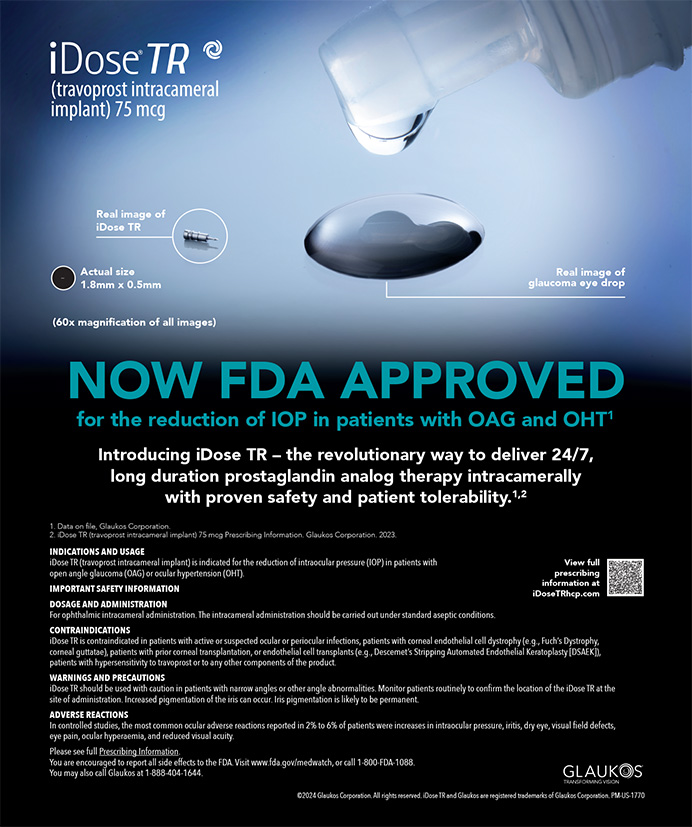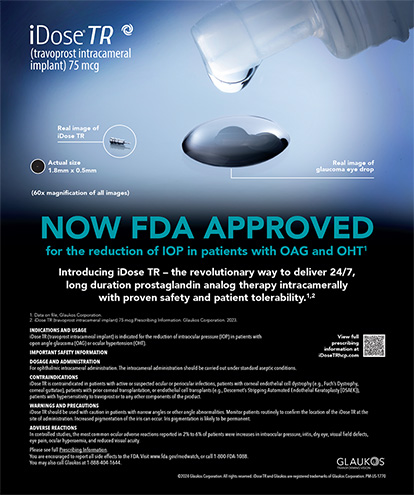Cover Stories | Oct 2005
5 Questions With Walter J. Stark, MD
Dr. Stark comments on progress made in corneal transplantation methods and the rewards of ophthalmology.
Walter J. Stark, MD
What do you feel has been the greatest advance in corneal transplantation since you entered the field?
There have been a number of advances in corneal transplantations, but particularly in the management of donor material through the organization of the Eye Bank Association of America (Washington, DC), Tissue Banks International (Baltimore, MD), and various other associations. Twenty-five years ago, patients had to wait 6 months for a transplant, and it would have to be performed shortly after harvesting the tissue. Today, with the development of superior storage mediums, donor handling, analyzing capabilities, and screening (to avoid transmission of disease), patients only wait between 1 and 2 weeks, and corneas may be used up to 10 days following the death of the donor. Also, the surgical technique, microscopes, suture materials, and topical cortical steroids all have undergone numerous enhancing iterations. As Director of Corneal Services at the Wilmer Eye Institute at John Hopkins University in Baltimore, I became National Medical Director of Tissue Banks International, an extremely successful worldwide organization. Patients who receive corneas or tissue through Tissue Banks International are assured a high quality allograft for their surgery.
Having been at the Wilmer Eye Institute since your residency, what transitions have you seen it undergo?
The Wilmer Eye Institute has evolved from a full-time faculty of approximately five clinicians and 10 researchers to almost 100 full-time clinicians and 75 research PhDs with a major support staff. Our annual budget has increased from probably $3 million or $4 million to $70 million. Collectively, Wilmer researchers are now the number one recipients of grants from the National Institutes of Health (Bethesda, MD), and we spend $30 million per year on eye research. The institute hosts some of the leaders in the ophthalmic field, and it fosters collaboration, conducting a number of joint projects with Johns Hopkins' experts.
How have you learned to manage rising patient expectations?
Patients have tremendous expectations, particularly because of the way that certain types of surgery have been trivialized. A perfect illustration of this is the situation that is occurring with the introduction of multifocal IOLs. Patients say they would simply like to be able to see perfectly at distance and near and never have to put on a pair of glasses, not realizing that this is an unrealistic expectation and that even new technologies have drawbacks. For instance, the new multifocal lenses have a significant risk of nighttime glare, and patients who must drive at night are not good candidates for these lenses. It is important to inform patients of the benefits and the risks involved.
What are your thoughts on the role of industry members in the ophthalmic field?
We have a fantastic industry in ophthalmology, both in terms of the pharmaceutical companies and those that develop equipment. I enjoy collaborating with these companies, because the exchange of ideas that takes place allows for the development of new drugs and devices that improve patients' lives. As a former chairman of the FDA's Ophthalmic Devices Panel, I have witnessed the incredible commitment of industry associates in partnering with physicians to solve the many problems related to blinding diseases that patients face.
What is something that your colleagues might be surprised to learn about you?
I am becoming famous not because of ophthalmology but because of my daughter, Melissa Stark, who was a Monday Night Football sideline reporter and now is a national correspondent with the Today Show. I tried to get each of my three children to go into medicine, but I could not talk her into it. My son works for a pharmaceutical company, and my other daughter is a doctor. Some physicians say they would not want their kids to pursue a medical career because of the reimbursement issues. If they went into medicine for the financial amelioration, then I think they are missing the point. The medical field is so exciting, ophthalmology in particular. Surgeons can restore a patient's deteriorated sight to its previous quality or even better. Ophthalmology has been extremely rewarding for me. The only complaint I ever get following cataract surgery is from patients who jokingly say that after looking in the mirror, they believe that I gave them wrinkles that they did not see before their surgeries.


